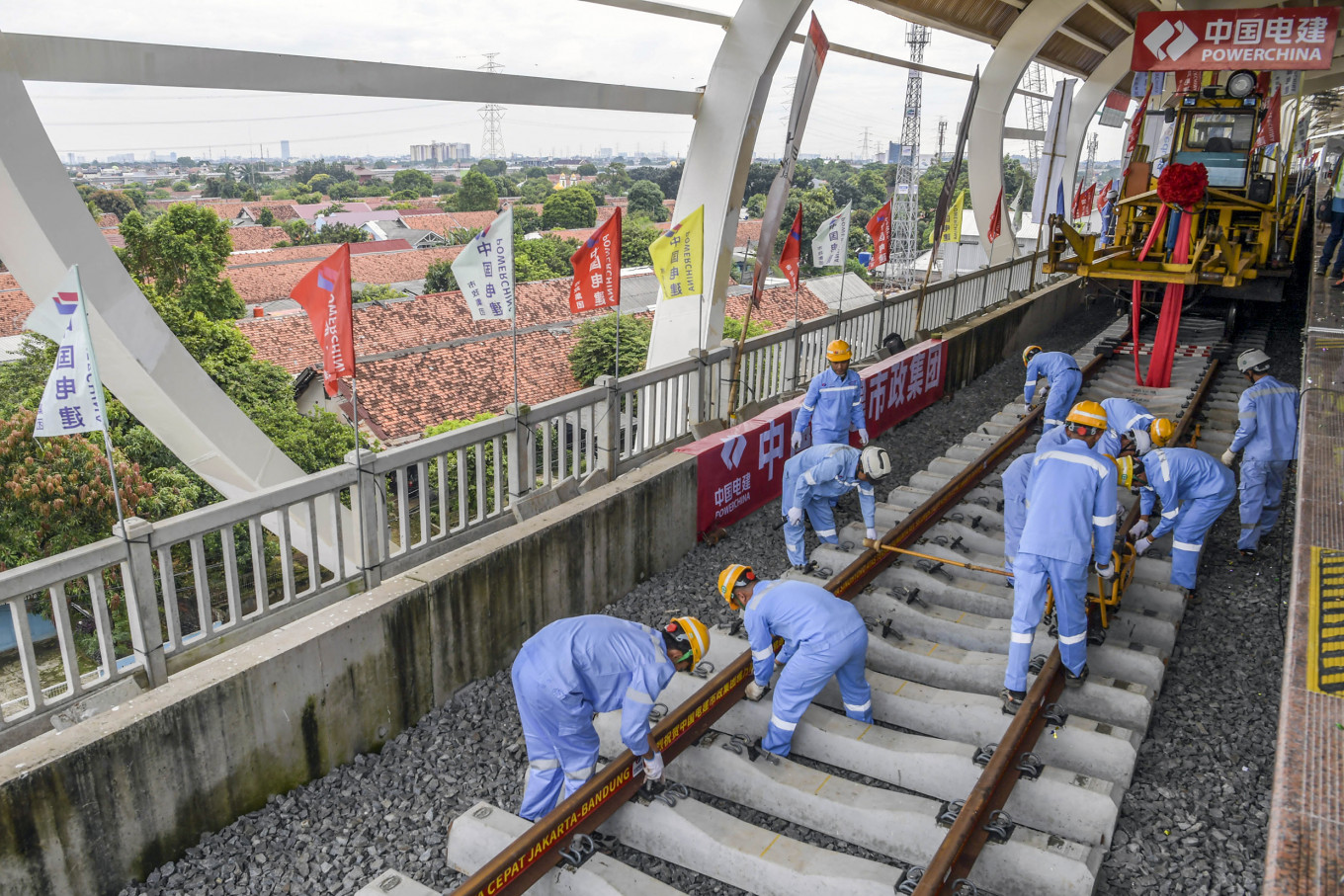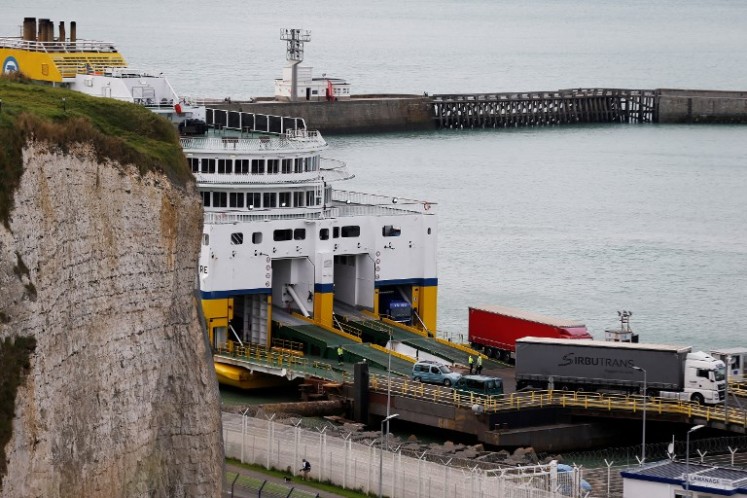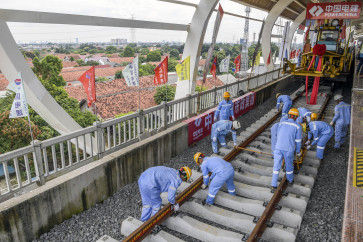Popular Reads
Top Results
Can't find what you're looking for?
View all search resultsPopular Reads
Top Results
Can't find what you're looking for?
View all search resultsTop regional lender China struggling with development commitments, study finds
Despite its financial heft, China is struggling to realize some of its bigger development financing commitments, according to a recent study, fueling concerns that the Jakarta-Bandung high-speed railway could be derailed.
Change text size
Gift Premium Articles
to Anyone
 Workers construct tracks for the Jakarta-Bandung highspeed train project at Halim Station, East Jakarta, on March 31, 2023. PT Kereta Cepat Indonesia China (KCIC) said the project was 90 percent complete and would be ready for operation in August, although others beg to differ. (Antara/Galih Pradipta)
Workers construct tracks for the Jakarta-Bandung highspeed train project at Halim Station, East Jakarta, on March 31, 2023. PT Kereta Cepat Indonesia China (KCIC) said the project was 90 percent complete and would be ready for operation in August, although others beg to differ. (Antara/Galih Pradipta)
C
hina is the largest development financier in Southeast Asia, according to a recent study by Australian think tank the Lowy Institute, underscoring its importance as a partner for the economically focused ASEAN.
But despite its financial heft, Beijing is struggling to realize some of its bigger commitments, the Lowy study has found, as China competes with other key powers such as Japan and South Korea, both of which have proven their mettle as deep-pocketed and reliable lenders in a fast-growing region.
For Indonesia, China’s biggest benefactor and the region’s biggest aid recipient, Beijing’s development funds have translated into big projects such as the Jakarta-Bandung high-speed railway (HSR), but the project has suffered multiple delays and swelling costs.
The Lowy Institute’s Southeast Asia Aid Map collated data from between 2015 and 2021 and examined more than 100,000 projects across all ASEAN member states and Timor-Leste. It also studied 97 development partners in the region, including traditional bilateral partners such as the United States, financial institutions such as the Asian Development Bank (ADB) and the World Bank, as well as nontraditional partners such as China, India and Middle Eastern nations.
The study estimated that within the six-year period, Southeast Asia had received an average of US$28 billion a year, making for a total of $200 billion in official development financing (ODF).
And while 80 percent of the total development financing was funded by traditional development partners, China had cemented its place as the single largest financier.
Southeast Asia’s top three financiers in the period were China, which spent around $5.53 billion a year, the ADB ($4.49 billion) and the World Bank ($4.1 billion).

















